Citrus trees are evergreen, never become fully dormant and cannot withstand temperatures as low as those tolerated by deciduous trees.
However, citrus trees can become preconditioned or acclimated to cool air temperatures that occur in late fall and winter. This preconditioning, called acclimation of citrus trees, induces a degree of dormancy know as quiescence. Trees in active growth are more severely injured by cold than those that are acclimated. One of the best ways to lessen cold injury and to hasten recovery from cold damage is to maintain healthy trees. Good cultural practices that enhance acclimation in the early winter should focus on maintaining a tree's quiescence until all cold weather has passed. Recovery from cold damage depends largely on tree vigor and health. Weak trees that already show disease, insect damage, and nutrient deficiency symptoms or that are heavily cropped are usually the ones most severely damaged by freezing temperatures and the slowest to recover.
Symptoms of Freeze Damage
The extent to which citrus trees can be freeze damaged depends on a number of factors and conditions, and the symptoms of damage may occur over an extended period of time. Factors responsible for freeze damage include minimum temperature, duration of freezing temperatures, and stage of tree acclimation. Susceptibility of trees to freezing temperatures can also be related to tree vigor, scion and rootstock, crop load, and grove and soil conditions.
1. Leaf and Wood Injury
Citrus freeze injury is caused by the formation of ice crystals in the intercellular spaces of plant tissues. Ice formation is usually accompanied by a rupture of the cell membrane and damage to the cell wall. Ice formation in leaves and the subsequent damage are diagnosed by dark water-soaked areas on the leaf surface (Figure 1).
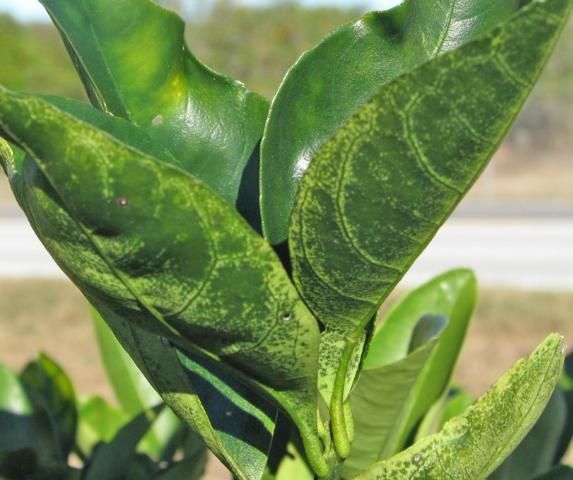
Credit: Chris Oswalt, UF/IFAS
Such areas may or may not turn brown after thawing. Completely frozen, killed leaves or tissues within leaves appear bleached or tan to brown in color (Figures 2a, 2b). New succulent growth, when frozen, will often turn blackish in color instead of brown upon thawing (Figure 3). Leaf drop within a few days indicates that the wood is likely not damaged or killed (Figure 4), while leaf retention on the twigs usually indicates wood kill. Wood damage can be checked by scraping the outer layer of bark. Green tissue in most (but not all) cases indicates live wood, while brown tissue implies freeze-damaged dead wood. Ice formation may also occur in wood, causing splits in the bark, particularly in young trees (Figure 5). Such splits may be extensive in larger trees resulting in serious injury. Extensive bark splits may cause the limbs to die and later break off many years after the freeze event.
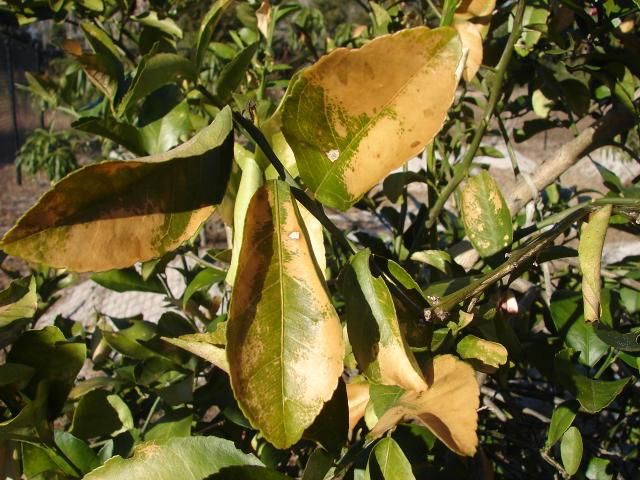
Credit: Mongi Zekri, UF/IFAS
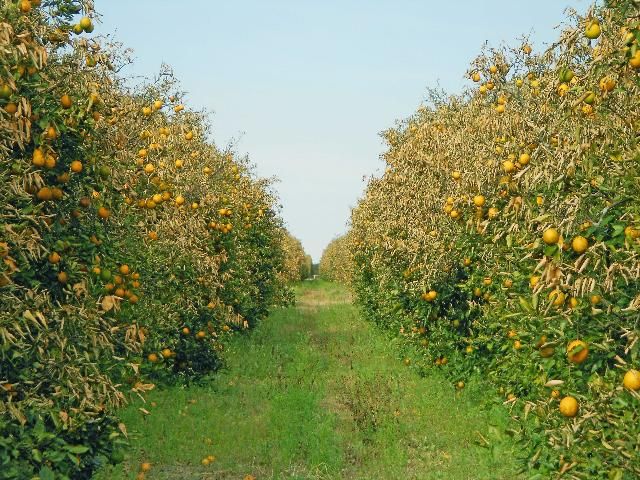
Credit: Mongi Zekri, UF/IFAS
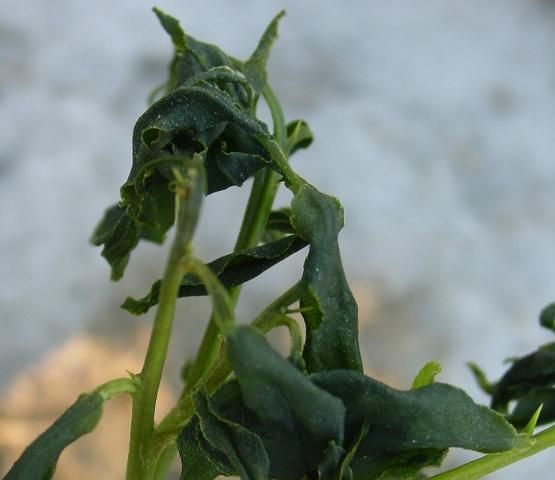
Credit: Mongi Zekri, UF/IFAS
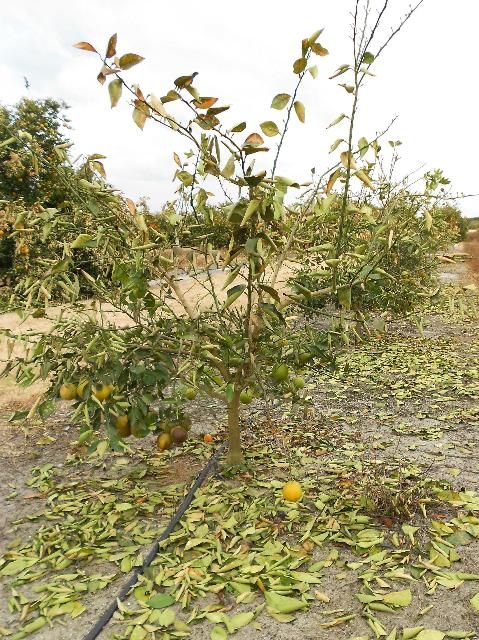
Credit: Mongi Zekri, UF/IFAS
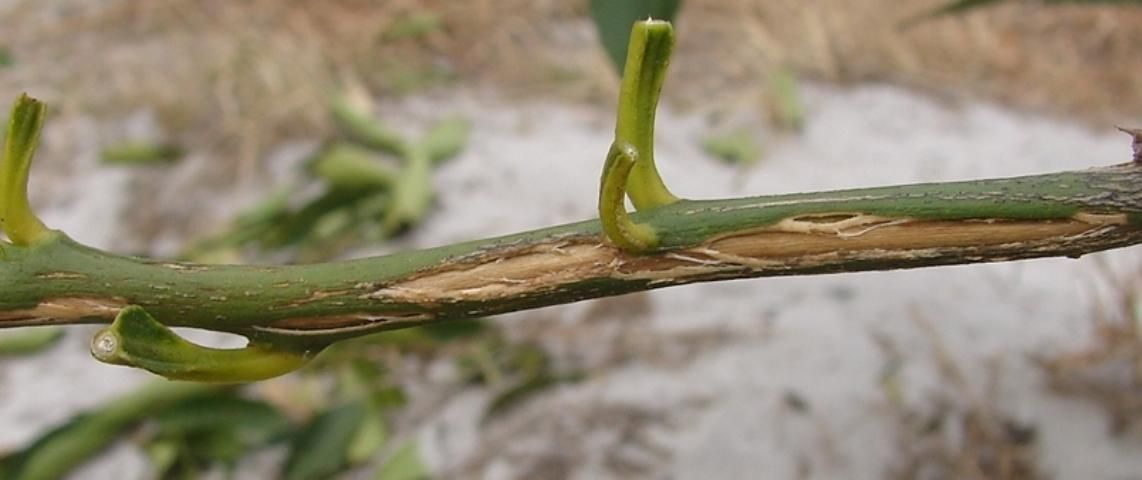
Credit: Mongi Zekri, UF/IFAS
New growth developing on freeze-damaged trees will often collapse as the wood behind the new growth dies from freeze injury. Trees should not be pruned after the freeze event until the extent of the damage is determined. Citrus cultivars, such as Pineapple oranges and Murcotts, when heavily loaded with fruit, will often sustain severe freeze damage. However, similar trees, when lightly cropped or without fruit following harvest, will generally tolerate freezes much better.
2. Fruit Injury
Fruit severely injured during a freeze may drop quickly or may drop more slowly over time, but usually the external appearance of the fruit is not significantly changed (Figure 6). Temples and grapefruit are particularly susceptible to fruit drop, while oranges often remain on the tree for longer periods.
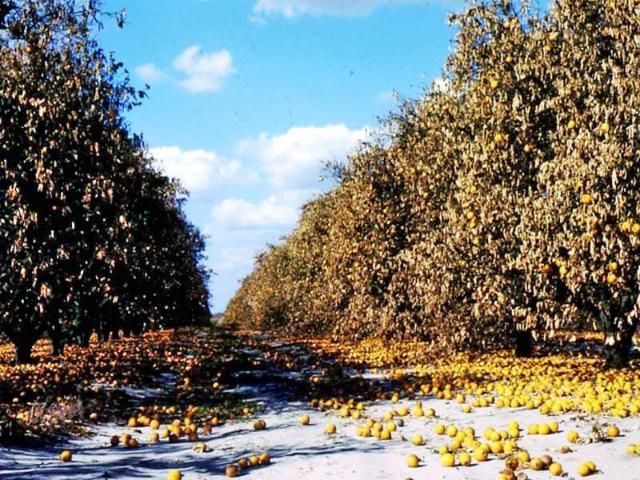
Credit: Mongi Zekri, UF/IFAS
Freeze damage on certain cultivars, such as Murcotts and grapefruit, may show dark or reddish-brown depressions, pockets, or pitting on the peel surface (Figure 7). Blemishes in the form of pitting may occur on the peel of grapefruit as a result of low but nonfreezing temperatures, known as "chilling" injury. Following severe freezes, citrus fruit will show extensive internal injury (Figure 8), which progresses with time. Thin-skinned fruit usually show greater internal injury than thick-skinned cultivars, such as grapefruit.
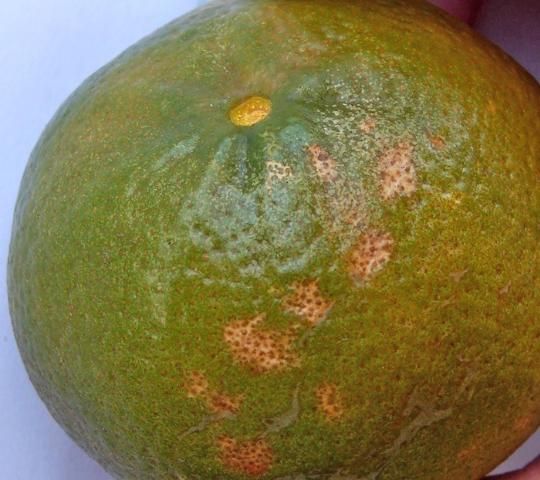
Credit: Mongi Zekri, UF/IFAS
The first evidence of freeze injury in citrus fruit is characterized by the presence of water-soaked areas on the segment membranes. The juice sacs or vesicles within injured segments will become dry and collapsed (Figure 8). Shortly after the freeze, cutting the fruit progressively from the outside to the inside, starting at the stem end, will show the amount of ice formed and its location and distribution within the fruit.
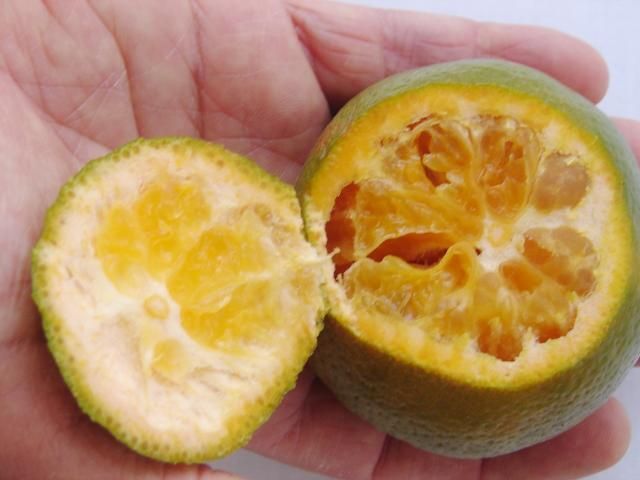
Credit: Mongi Zekri, UF/IFAS
The deeper the ice crystals form, the greater is the injury to the fruit. The frozen area will eventually dry out, leaving the injured fruit partially hollow and lighter in weight than sound fruit of comparable size. Juice loss occurs over a period of several weeks. The amount of overall juice loss is dependent on damage severity and weather conditions following the freeze.
Recovering from Freeze Damage
The type of care needed for citrus trees that have been freeze injured will be determined by a number of factors, including the time of year at which the freeze occurs, the overall condition of trees at the time of injury, and the weather conditions immediately following injury. These factors will influence the type of approach to use for recovery of freeze-damaged trees. The natural reaction after a freeze is to do something right away. However, there is very little that can be done at that time because it is impossible to determine the full extent of injury. Twigs and branches may continue to die for a period of several months to a couple of years following a severe freeze. This is due to latent damage to the bark and wood that may not be apparent soon after a freeze. Citrus trees on which twigs and branches have been killed by cold should receive extra care during the following growing season. A "wait and see" approach is best applied immediately following a freeze.
1. Pruning
The true extent of freeze damage to branches may not be clear within the first few months following a freeze. No attempt should be made to prune or even assess freeze damage until the new spring flush gets fully expanded and mature. Therefore, no pruning should be done until late in the spring or during the summer after a freeze. In early spring, freeze-damaged trees often produce new growth that soon dies back. Sufficient time should be given for the dying back to cease and for the new healthy growth to take place and fully expand. Experience has shown that early pruning does not promote recovery and that delaying pruning to the proper time will save money. Pruning cuts should be made into living wood and, where possible, at crotches, leaving no stubs or uneven surfaces. It is advisable to remove heavy brush from the grove immediately following the pruning operation.
2. Fertilization
Fertilization of freeze-damaged trees should be reduced until the trees are back to their original canopy size and foliage density. Fertilizer should be applied more frequently, but rates should be reduced in proportion to the amount of tree damage and to the expected crop load. Growers and production managers should make wise decisions based upon their local situation. For example, trees suffering 10%-15% wood loss should receive a regular nutritional program since fruit will be produced that year. Trees suffering 50%-60% wood loss most likely will not produce fruit that year, and the nutritional program should be reduced according to the damage. Nutrient deficiency symptoms may be intensified in freeze-damaged trees because the leaves require nutrients in order to regenerate large amounts of new growth necessary to replace lost foliage. Thus, foliar sprays of micronutrients (copper, zinc, manganese, and boron) will be beneficial to new growth. Nitrogen, phosphorus, potassium, magnesium, and calcium should also be applied to satisfy the needs of the trees and to increase leaf size because trees tend to produce small leaves for a few years after suffering severe leaf loss.
3.Irrigation
When leaves are lost, transpiration from the tree canopy is greatly reduced. Therefore, the tree will require less water, and thus the amount of water supplied to the tree should be reduced. Excessive irrigation does not result in rapid recovery, but may instead result in root damage and nutrient movement below the root zone. Normal irrigation should be restored when trees regain their former stature and canopy density. Over-irrigation in the winter following a cold injury event should be avoided because it may induce new vegetative growth which could be damaged by subsequent freezes. If freeze damage occurs early in the winter, cutting back on irrigation will delay tree growth until the danger of additional freezes has passed. However, trees that put forth new growth should not be allowed to get water stressed.
4. Weed and Disease Control
An effective weed control program implemented after the freeze is essential to ensure rapid recovery from freeze damage because weeds will compete heavily with the trees for available water, nutrients, and light. Foliage loss can result in faster growth and additional weed pressure due to the increase in sunlight passing through the tree canopy. With loss of foliage, growers cannot afford to lose any of the new flush. Fungicide applications for greasy spot control in May and July are essential. Melanose control after a freeze is a difficult decision for growers and production managers to make. If fruit is expected that year and the fruit is destined for the fresh fruit market, fungicide applications will be needed to increase pack-out. Even on non-fruiting trees, one or two fungicide applications should be made to help prevent infection of new flushes and of next year's crop. Be sure to include copper or another fungicide with nutritional sprays to enhance disease management.
Summary
One of the most devastating environmental stresses to citrus trees is a freeze event. However, citrus trees are vigorous and can recover quickly from cold damage, if given proper care. The extent of freeze damage and the level of care provided to citrus trees dictate the rate at which trees will recover. With proper care, trees suffering defoliation and minor twig damage can be expected to return to pre-freeze condition in a single year. Trees with extensive damage to their small branches, but no damage to their scaffold branches and trunk should recover by the second year. Growers should properly evaluate the extent of cold damage to their trees, particularly before implementing any pruning activities. After this assessment has been made, it is then time to follow the appropriate recommended citrus cultural practices to maximize tree recovery.